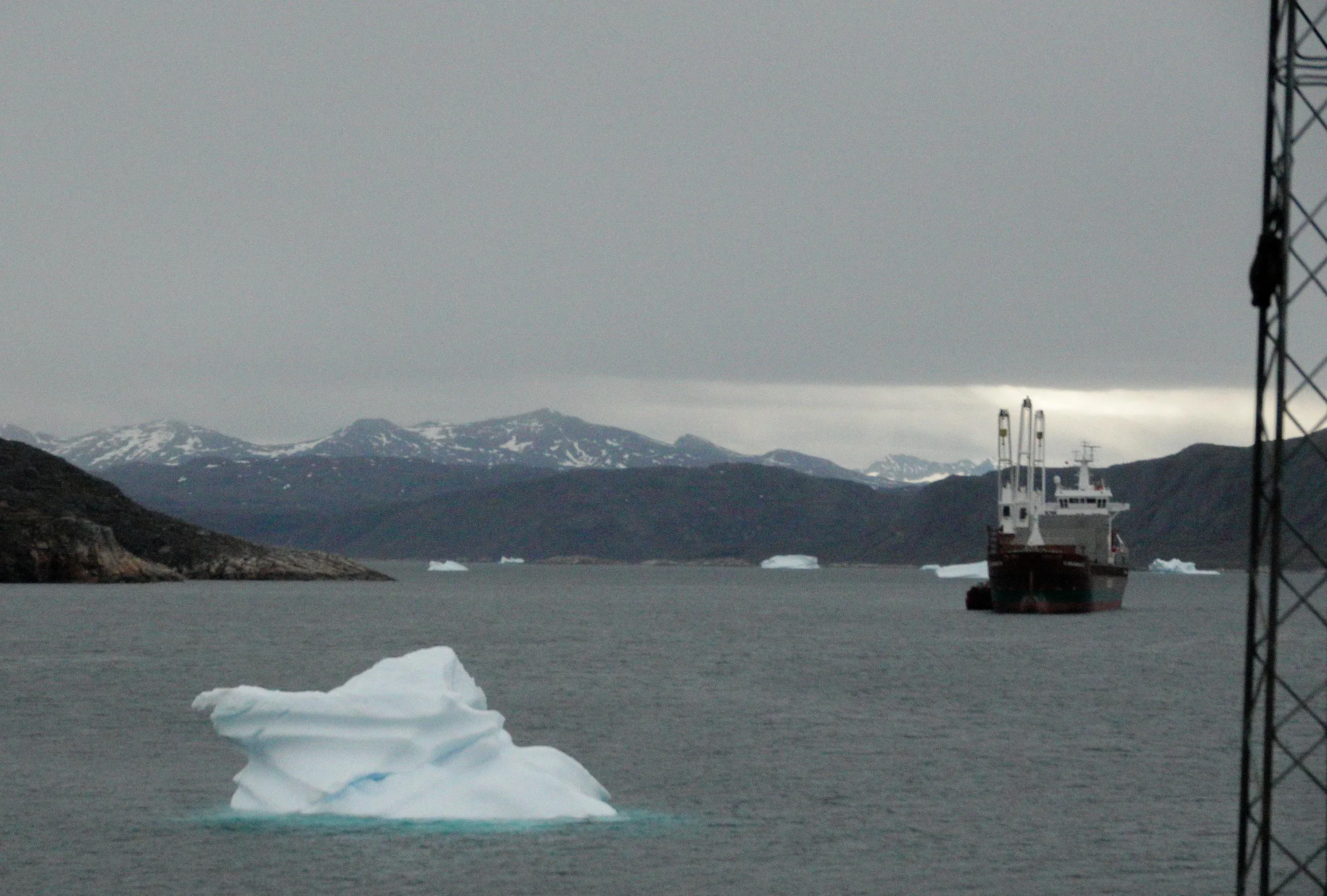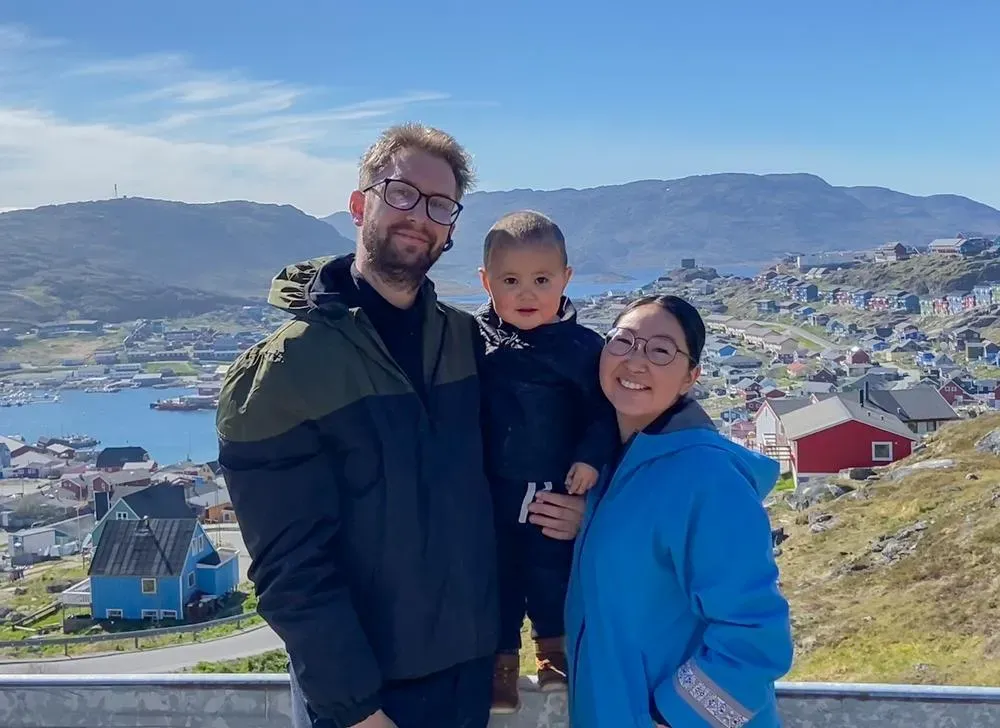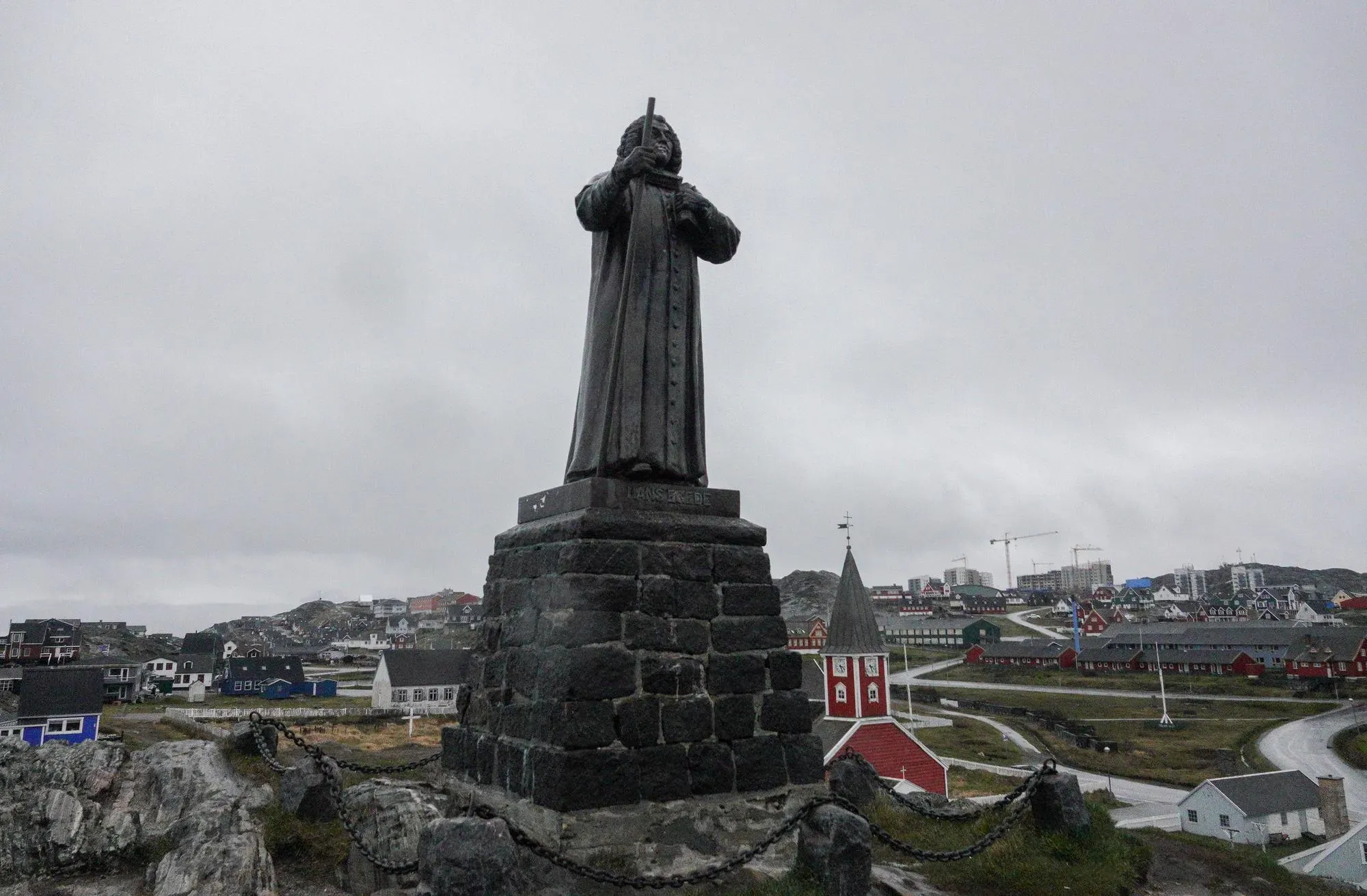.jpg.webp?itok=8QNj_YPQ)
QAQORTOQ, GREENLAND — I had just finished taking photos of Kornelia and her family—her husband, Aleksander, and their son, Tumi, who begrudgingly humored me while I snapped away with my camera. The couple smiled at each other and laughed as the 2-year-old squirmed in his father's arms, desperate to place his feet on the gravel and sprint down the hill. He did just that a moment later, giggling as his father chased after him.
With only me and Kornelia there, we enjoyed a quiet moment—what seemed like a rarity for her. We had stopped at a spot on the side of the road overlooking the small town of Qaqortoq. To my right, rocky hills were covered in yellowing grass, punctuated here and there by houses painted in shades of blue, red, and yellow. To my left was the glistening ocean, still except for the occasional wake of a passing boat. Only a few icebergs remained in the dark teal water by the shore, but they captured my gaze and awe nonetheless.
"It's beautiful," I said to Kornelia.
"Yeah," she sighed, "it is."

I wasn't sure if it's because of the language barrier or because we both seem to have minds much louder than our surroundings could ever be, but Kornelia and I often found ourselves sitting in comfortable silence.
I thought we could have stood there, side by side, staring at the horizon for hours, never speaking but somehow telling each other everything. I do not in any way claim to know what Kornelia is going through or to relate to her unique experiences as an Indigenous woman living in Greenland, but we are more alike than I'll ever be able to tell her.
That's one of the things I sometimes dislike about my work: You have to uphold that barrier between yourself and your source. I find myself occasionally testing the limits of how much I can let it drop, but it remains up nonetheless. Still, earlier that day when Kornelia stared at her steaming cup of coffee, tears rolling down her cheeks as she gathered her thoughts, I desperately wanted to let my own tears fall and hold her hand and say, "My mind is loud, too."
But standing on that hill, we said nothing for stretches of time. Maybe it was my imagination, but I swear I saw her shoulders rise higher and fall—a deep breath. Perhaps it is easier to breathe here on this hill in a moment of respite from the realities of life. I know it was easier for me.

As Aleksander and Tumi made their way back to the car—a small, white manual transmission they bought when they found out they were pregnant with their first child—I broke the silence to ask Kornelia a question.
"Are those the native flowers of Greenland?" I pointed to the bright purple flowers I'd noticed throughout the town.
"No," she said. "Those flowers are from Denmark, but they spread quickly."
The flowers could be seen everywhere: on the edges of sidewalks and roads, by the water, sprouting between rocks, pushing out the native flora as it crept farther through the town.
I realized the flowers seem to act the same as their colonizer counterparts. During Denmark's colonial rule over Greenland, which spanned a two-century period beginning in the early 1700s, many local ways of life were sidelined in favor of commercialism and "modernization." The impacts of this rule lingered into the post-colonial period in the 1950s, driving up local rates of alcoholism, abuse, and suicide. A 2017 report by Greenland’s Reconciliation Commission found most Greenlanders still experienced the negative effects of colonization.
A few days after I departed from Qaqortoq and returned to Nuuk, I chatted with my translator as we walked up a street near the harbor. An elderly man with kind eyes, he spoke of his life in Greenland and how he could see Denmark's influences throughout the island, both culturally and politically. After a while, I decided to test my revelation.
"The purple flowers—they're from Denmark, right?" I asked. "They're everywhere."
He laughed and shot me a knowing look. "Yup," he said. "You got it."
On one of my final days in Greenland, I returned to a spot I frequented throughout my stay: a grassy hill overlooking Nuuk's harbor. At the top was a large statue. Normally, I'd sit beneath its shadow and watch the passing boats and people milling about the boardwalk. But that day, I found myself staring curiously at the bronze figure. I walked around its front and read the name engraved on the plaque: Hans Egede. The Danish-Norwegian missionary is credited for setting Denmark's colonization of Greenland into motion when he arrived on the island in 1721.
Even now, Denmark's presence looms over the town.

My mind went back to Kornelia's apartment in Qaqortoq, where we talked for hours about what it's like for her to live in Greenland and the painful remnants of colonization that she continues to experience. She spoke softly, staring out a window with a view of Qaqortoq's rolling hills. That's where she thinks best, she told me. "When I have a lot on my mind," Kornelia said, "I go to a mountain or I go to the lakes."
I spent the bulk of two days with Kornelia. The first day we drove around the town while her husband stayed home with their napping toddler. She pointed to a small wooden building with a few gas pumps out front. "That's the only gas station," she said. We drove on. She waved to each person we passed—many of whom were her family members—and stopped occasionally to roll down her window and chat with someone walking along the road. I had never experienced such a small town. The student population of my university alone is 10 times larger than the population of Qaqortoq. Here, everyone knows everyone.
As an outsider, it was hard to imagine anything bad happening in a town where kids roam freely and the houses are painted in the broad palette of colors one might find in an ice cream shop. But paint can cover scratches.
Greenland ceased to be a formal Danish colony in 1953 when it became part of the Kingdom of Denmark. Greenland then gained Home Rule in 1979 and further autonomy through self-government in 2009. However, Denmark's influences remain. It's not all bad, Kornelia told me. But still in some ways feels forceful and invasive.
Like the flowers cover the hills.









